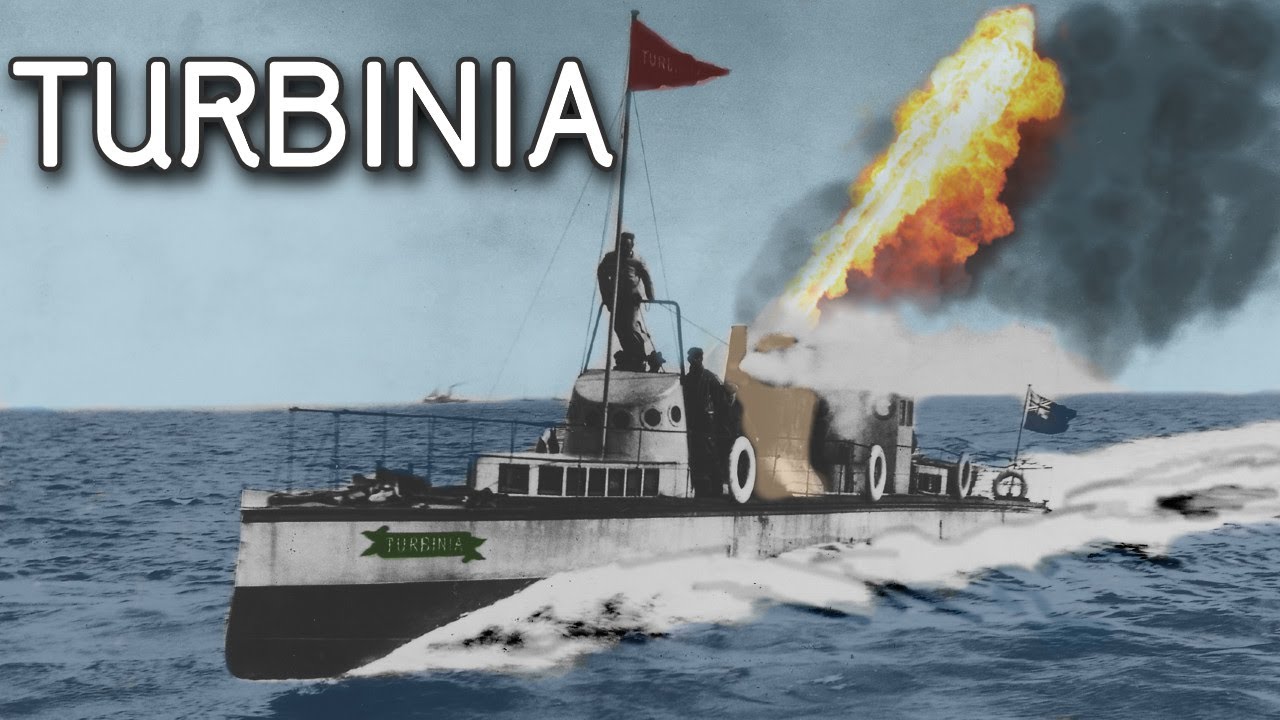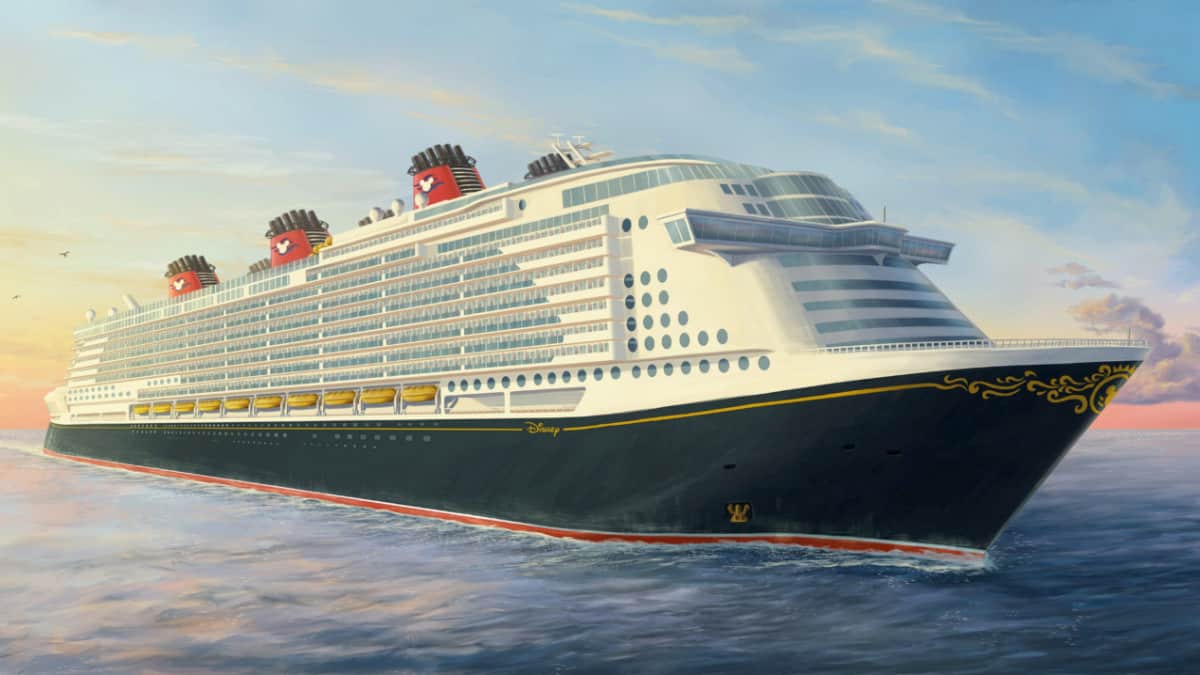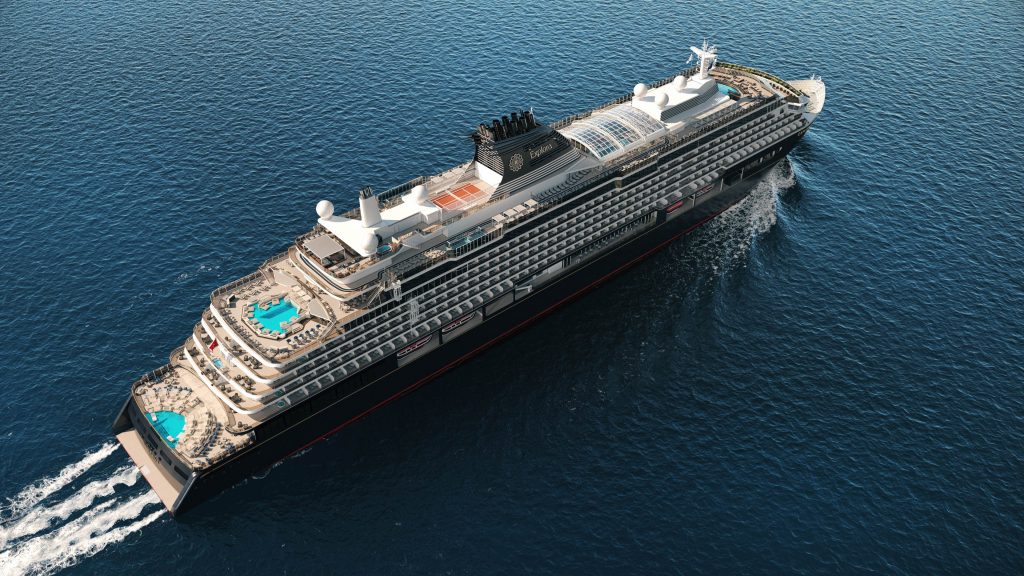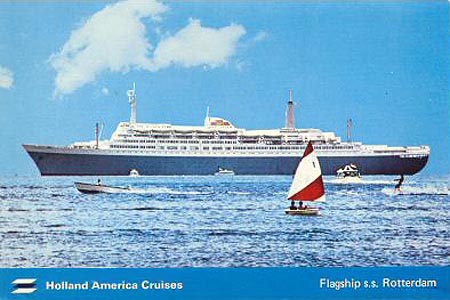Normally, ships like Turbinia are not within the scope of this website, but she played such an important role in the development of (passenger) ship propulsion that she can’t be left out. as many of the most famous liners and cruise ships were fitted with Turbinia‘s revolutionary steam turbine engines invented by British engineer Charles Algernon Parsons (1854 – 1931).
Turbinia was designed by Sir Charles Parsons, a famous British engineer. He studied in Dublin and Cambridge to become an engineer and his first employer was W.G. Armstrong & Co. an engineering firm at the river Tyne, Newcastle. In 1884, now working for ship-engine manufacturers Clarke, Chapman & Co. of Gateshead he designed a steam turbine engine driving an electrical generator. His steam engine turned a rotor, the turbine, at high speed, 18,000RPM using steam pressure to drive the rotor blades. He patented his engine at the in april 1884. At first it was used to provide electricity and used in power-stations and transport (shipping). E.g. lighting aboard ships was one of the early applications, the first ship the new engine lit being the Earl Percy, a steam ship of the Tyne Steam Shipping Company. In 1889, Parsons started his own company as he saw other possibilties for his invention, namely to propel ships faster and more efficient than was possible up till then. Parsons now needed a vessel to test his revolutionary engine and he designed a compact steam yacht, the Turbinia.

The first model tests were carried out at a pond at Ryton-on-Tyne. In 1894, work finally started at the Brown & Hood works at Wallsend and she ship was launched on August 2,1894. She had a length of 104 feet, a beam of only 9 feet and a draft of 3 feet, Turbinia measured 44,5 tons and she would sail with a crew of 10. At first only one radial flow type turbine was installed driving one propeller. This gave Turbinia a speed of 20 knots, completely unsatisfying for Parsons. although incredibly fast at the time… A new engine configuration was installed, this time three parallel flow type turbine engines that were linked to one propeller shaft each, with three propellers fitted on each shaft, so she now had nine propellers in total. With her 2000hp, Turbinia could now reach a top speed of over 30 knots, making her by far the fastest ship in the world. During testing on the river Tyne she overtook a warship easily doing “only” 28 knots.
Now Parsons was convinced of what Turbinia could do and he needed to show the world what she was capable of. This opportunity came on June 26 1897, during the Navy Review for the diamond jubilee of Queen Victoria at Spithead, situated between Portsmouth and the Isle of Wight.

At this fleet review, a 140 Royal Navy ships were present., as well as some foreign warships from allied countries like Prussia and even passenger liners Campania (Cunard Line) and Carthage (P&O). The Prince of Wales representing Queen Victoria and as a special guest Prince Henry of Prussia (a grandson of Queen Victoria) as well as high ranking naval officers, members of the House of Lords, MP’s and many other dignitaries all attented this important event.
Uninvited, Parsons fired Turbinia up to a speed of over 34 knots racing between the lines of warships and even close to the Royal Yacht Victoria and Albert. They were chased by a Royal Navy picket boat, but she could not even come close. Parsons had made his point, arising interest from the British Admiralty. They were the first to order two ships to be fitted with the new engines. Next, Parsons founded the Turbinia Wharf at Newcastle to build the engines.

The first ship to be launched with the new engines installed was the Royal Navy destroyer HMS Viper in 1898. This ship was followed by a sistership, the HMS Cobra in 1900.
Because of the success of turbine-driven ships, the Royal Navy decided all new war ships had to have Parson’s revolutionary steam turbine engine like the heavy battleship Dreadnaught in 1906. But they were also used by the German Navy for their battlecruiser Von Der Tann in 1910.
Meanwhile, in 1901, the first passenger ship to recieve steam turbine engines was the Clyde pleasure steamer King Edward. An important breakthrough came in 1905, when the first transatlantic liners were fitted with them. They were the Virginian and the Victorian of the Allan Line. Also in 1905, Cunard Line fitted their new Carmania with Parsons steam turbines. This was an experiment, as Carmania‘s sister ship Caronia was fitted with traditional reciprocating engines so the differences between the two could be closely monitored. Soon, it became clear that the steam turbines were superior, both in speed and cost effectiveness

Cunard Line decided to use steam turbines for their new large transatlantic liners Mauretania and Lusitania. This really showed the superiority of Parsons’ steam turbine engines. These vessels were the biggest of the world, measuring 31.000 tons. Another highlight, Mauretania took the famous Blue Riband and held the speed record across the Atlantic until 1929. When she was taken into service in 1907, Turbinia would sail alongside her big daughter when Mauretania was leaving the Tyne, but due to a problematic air pump she couldn’t accompany her when she departed.
Apart from famous transatlantic liners Lusitania, Mauretania, Queen Mary and Queen Elizabeth, only in the sixties and seventies some thirty large passenger ships were built which were driven by Parsons turbines, including such famous ships as the Andrea Doria, Leonardo da Vinci, Northern Star, Orsova, Staendam IV, Rotterdam V, Transvaal Cstle, Windsor Cstle, Oriana and France.
Earlier in 1907, Turbinia had almost met her end when she was nearly cut in two by the ship Crosby which was launched at the river Tyne opposite the Heaton works, where she was docked at the time. She was repaired, but because she had now fulfilled her task, she was retired in 1908. To prevent her from deteriorating, she was lifted out of water and put on display on the quay at the Turbinia Works.

In 1927, the ship was cut in half and the stern part was sold to the Science Museum in London to be displayed. In 1944 while her fore section was sold to the Newcastle Corporation to be displayed at the new Exhibition Park at Newcastle. This situation ended in 1959, when both parts of the ship were reunited and the ship was now put on display at the Newcastle Exhibition Park from 1961 onwards. In 1983, she was restored by the Tyne & Wear Museums to her original 1890’s state, which took 11 years. Now, a hazardous transport job followed manoeuvring her through the streets of Newcastle tot the Newcastle Discovery museum where she has been on display in its main hall ever since. 1996.




